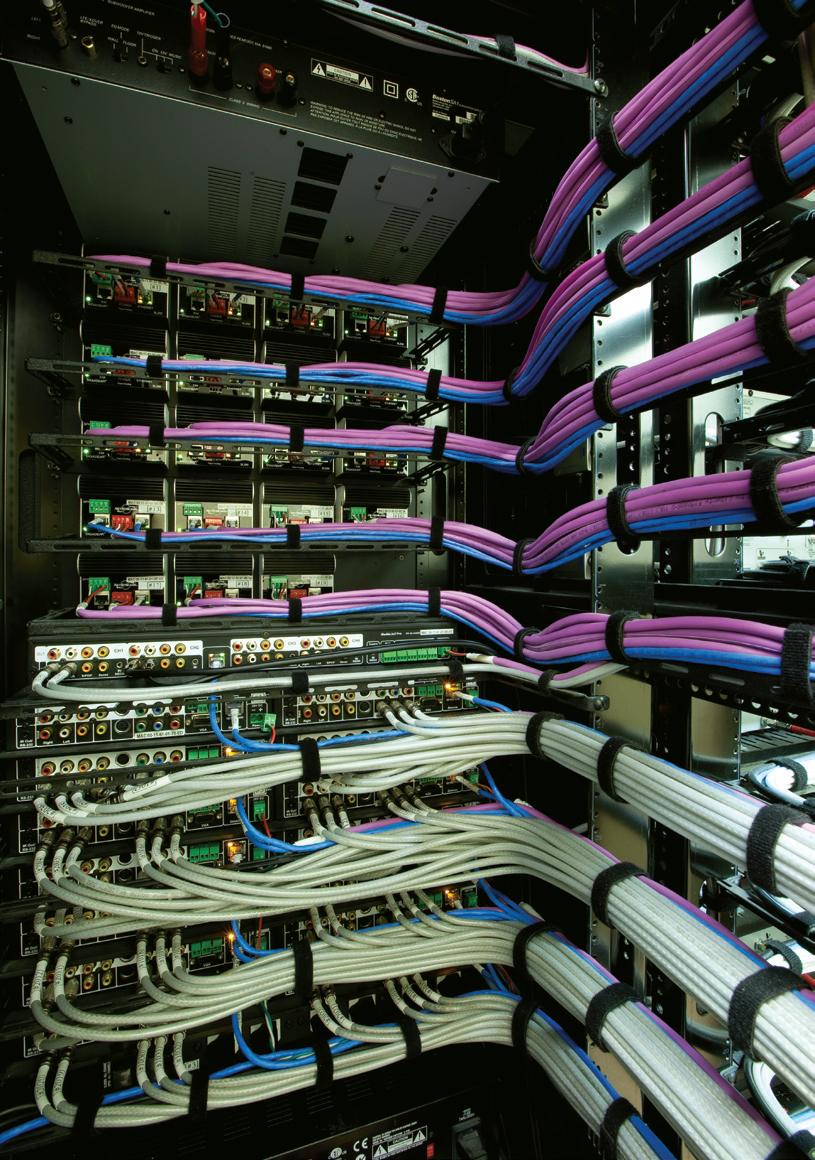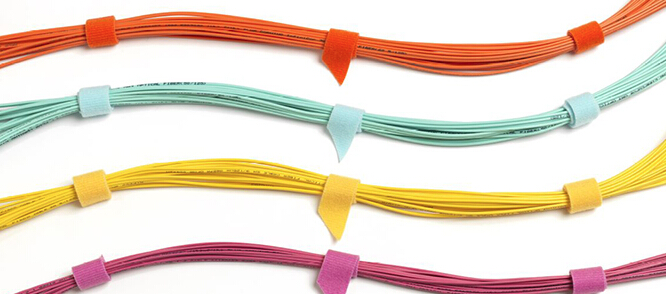Most of the service providers and companies are deploying fiber optic cables to upgrade their infrastructures and applications, aiming to satisfy the accelerating demand for higher bandwidth and speed. For every cable technician or data center designer, a troublesome problem they must encounter is to deal with the jumble of patch cords, both during installation and for regular maintenance. Phrases like “cable spaghetti” and “rat’s nest” are used to describe cable chaos in real life cable management failure, and its impact on network performance, reliability and appearance cannot be underestimate. So, in this article, let’s how velcro cable tie could help.
Cable chaos is a disastrous result of unsuccessful cable management, however, cable ties can relieve you from those cable gore. Also known as zip ties, cable ties are generally used to hold a group of cables together or to fasten cables to other components. Functioning like straps, cable ties are available in miniature sizes for holding small loads, and are also fabricated in long lengths and strong tensile strengths for large items or bundles. Cable ties can be customized in numerous colors or dimensions, according to application requirements.

Due to their low cost and ease of use, cable ties are ubiquitous in a wide range of applications. The common cable tie is normally made of nylon, which is stock items with most telephone companies and cable contractors. They can be cinched snugly to cable bundles without damaging the cables. However, some installers intend to cinch these ties down as tightly as possible. Sometimes they use a tool to increase leverage, squeezing the cable bundles so tightly that the insulation turns white or is cut by the sharp edge of the cable tie. This is an improper installation practice and can lead to unpredictable operation of the network.
As there is a tendency for users to over-tighten cable ties, which triggers a series of problems for managing cables, an alternative option worth trying is to use velcro cable tie , since it offers an optimum solution for smooth cable management. Velcro cable ties come in a roll or in pre-determined lengths. Bundle groups of relevant cables with ties as you install, which will help you identify cables later and facilitate better overall cable management.

In addition, velcro-based cable ties are reusable and can hold cable bundles securely without crushing them. They can be opened quickly, and installation, removal and adjustment require no tools. Nylon cable ties, on the other hand, can be used only once. They must be cut off and discarded if you want to change your cabling configuration. Velcro cable ties can also be cut to proper length, and assist in organization when transporting patch cords to job sites.
Velcro cable ties are offered with various colors, thus they are aesthetically appealing. Besides, they also obtain other advantages that help to achieve successful cable management.

- Avoid injury: Keeping fiber cables bundled affixed to server racks or hangers helps everyone avoid dangers like tripping, which would cause body injury and damage fiber optic cables as well.
- Eliminate damage to cables: Unlike plastic cable ties, the re-usable velcro cable ties will not crush the fiber optic cable’s fragile glass due to over tightening. As the ties are pre-cut, there’s no need for scissors or other cutting tools that may accidentally damage cables.
- Save money on energy costs: Jumbled cords can actually trap heat by blocking air flow, this means data center managers need to turn the air conditioning down to keep server racks at optimal temperatures. Organized cables that bundled by velcro cable ties allow for effective and appropriate air flow.
- Fix outages faster: With all the cables well organized, network operators are capable of seeing the entire cable bundle. So there is no need to untangle one cable from another. Which consequently contribute to identifying problems and to repair them quickly.
Being gentle on fragile wires, velcro cable ties are considered to be an easy, reusable, safe and flexible bundling solution for cable management. With velcro cable ties, cables can be properly labeled and arranged, and are easier to unfasten and re-organized. Meanwhile, they also serve as an adjustable alternative to the standard nylon cable ties that traditionally used in data centers and other fiber optic networks. So, why not try velcro cable ties?